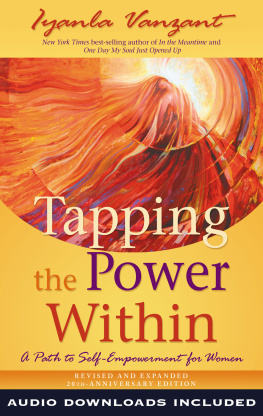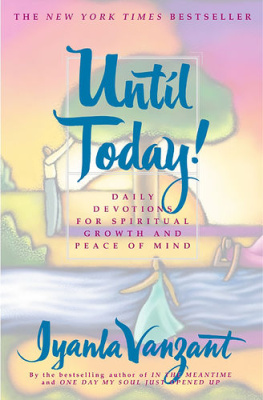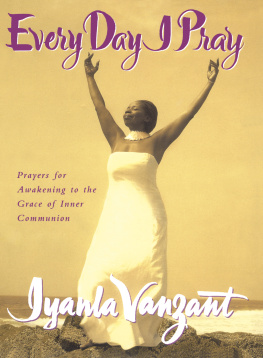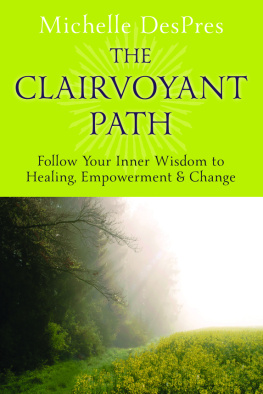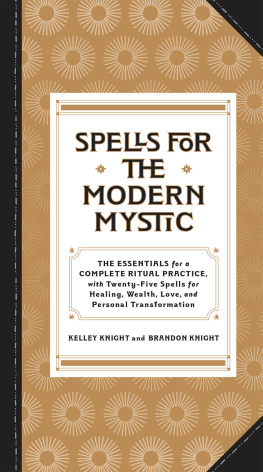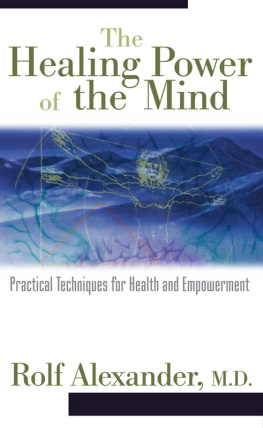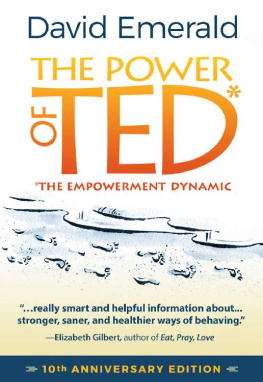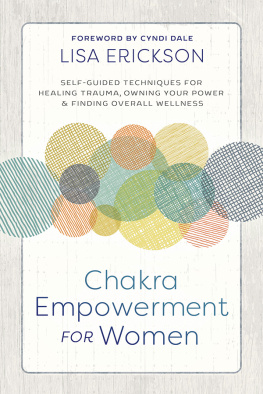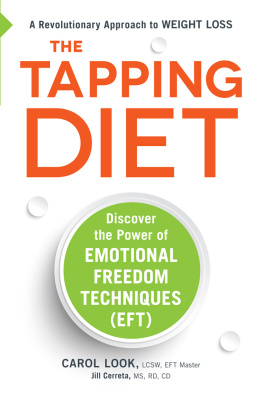Growing up as a dark-skinned child with short hair, a broad nose, and thin legs, it was difficult for me to find anything beautiful about myself. Being black was not fashionable back in the 1950s. In fact, the prevailing standard of beauty in my family and in the world was the polar opposite of what was reflected in my mirror. My brother didnt help matters any. He told me that I had graduated from ugly to oogly; a cross between a mistake and a disaster. It became a family joke. He told me, When God said beauty, you thought he said doodie, and ran off to the bathroom. Thats how he explained his perception of my lack of good looks. I was convinced I was ugly and I knew everyone else thought I was ugly, too.
As a young girl, I spent many hours peering in the mirror, praying for beauty. My mothers lipstick, barrettes, and hair bows from Woolworths and her Lady Esters cold cream offered little help. If I was going to find beauty, I would have to look someplace other than my reflection in the mirror. One day, a strange thing happened. I was about 12 at the time. I was sitting at my normal spot on the bathroom sink with one foot propped on the toilet for balance. I was staring at myself in the mirror when I saw a burst of colors behind me. I froze. My heart was racing. I was looking at a reflection of myself I had never seen before! I was tall, dressed in a long, flowing white robe. My hair, eyes, and mouth were the same, yet there was a glow around my face! I was beautiful!
The reflection in the mirror reached out to me. I panicked, and my foot slipped into the toilet. The reflection smiled. I heard someone say, Take my hand. Come closer. My mind was a blur, but I remember repositioning myself and peering deeper into the mirror. My reflection now had a bright blue glow. I heard the voice again: All your beauty is within. It is your power. All you need do is look within. The reflection faded. As I was jolted back to the present moment, I fell off the sink. On the way down, I hit my head on the tub and my mouth on the tile floor. Somebody knocked.
You okay in there?
Yeah, I must have fallen asleep, I said, scrambling to my feet and glaring at myself in the mirror. I had a huge bump on my head. My bottom lip was swollen and bleeding. I looked an awful mess! Tears welled up in my eyes. I wanted that beautiful reflection of me to reappear, but it didnt. So now, not only was I oogly, I was bruised. What was a girl to do?
In Search of Spirit
The beauty I was looking for in the mirror as a young girl was my Spirit; the divine spark that exists in every expression of life. In essence, Tapping the Power Within means connecting to the beauty, power, wisdom, love, and divine intelligence that exists at the core of our being. This spark of divinity is what beckons each of us to a higher, fuller experience and expression of life. The unfolding and conscious awareness of this divine presence within is the ultimate, common goal of all religious beliefs and spiritual traditions. Our awareness of and conscious connection to this divine essence is the intention that belies our religious affiliations and spiritual practices.
Each one of us is an eternal, physical manifestation of the Creator. For this reason Spirit is capitalized when it is being ascribed to or associated with God. As human beings, we are covered by a physical body, a specific form, for a specific purpose. As Spirit in human form, we each have a soul. Our soul is the invisible, intangible expression of all that we have been taught, as well as what we have come to believe, to think, and to experience emotionally about how life functions and how we are to function in life. While it is common to use the words spirit and soul interchangeably, this usage can lead to a misunderstanding and misrepresentation of who we are and how we are connected to God. Spirit is universal, while the soul is unique and specific to each human being.
God is Spirit. Spirit is the eternal, omnipresent (ever-present), omnipotent, (all-powerful), omniscient (all-knowing) presence of God, the Creator of all life. Spirit is the authentic identity of every living thing. As used here, authentic means the intangible, invisible essence of what can be known or seen. Every animal, plant form, and body of water that supports the reproduction and evolution of life is a manifestation of the Creators omnipresent Spirit. Human beings, made in the image and likeness of God, are a specific physical manifestation of the eternal Spirit of life. In the same way that electrical currents move through a wire into a lamp, television, or toaster to make it function, Spirit is the source of current that runs through and gives all life-forms the power to function in a precise way. Spirit has no specific race, color, or gender.
The Spirit of the human being is the eternal essence, true identity, and the presence of God. By contrast, the soul represents how the presence of God is manifesting in a unique way, in a particular form, for a specific purpose. Spirit is the power. The soul is what makes up the personality, or the unique expression of Spirit. In human beings, the soul may express as a specific race, or gender, with unique physical attributes (such as weight, height, eye color), or the propensity to be or do a particular thing. The soul is the intermediary, that links the presence of Spirit to the physical mind, emotions, and body.
Everything that has life can create life, can nurture life, or serves a purpose in life is Spirit. The Creators goal is for all spirits to learn to serve one another and to live in peace-filled harmony. Spirit, therefore, exists and expresses on many levels, as many expressions of life; those we can see and those we cannot see. A living being is a form of Spirit we can see. One who has lived and no longer breathes is a form of Spirit we can no longer see.
Most indigenous cultures teach that Spirit also exists in many forms, some of which we do not recognize. This concept helps us to understand why and how minerals, plants, and animals are also considered Spirit. Water, for example, is an expression of Spirit. It is a form of life that sustains and supports the reproduction and evolution of other life-forms. Whether in the womb of a human being or the depth of a river in which human and other life-forms can find food, water is an expression of Spirit that nurtures life.
Fire is another example of a living form we may not recognize as an expression of Spirit. The energy of fire can be constructive, as in a cooking flame, or destructive, as in the burning of a forest or home. Like all other life-forms, fire is an expression of Spirit that can support life. When, however, the essence of fire is misused or misdirected, it destroys life.
Likewise, when the soul is not properly educated about or connected to the presence and purpose of Spirit, it can become the source through which misuse of Spirit manifests. The most common result of this abuse is the destruction of the physical form.
As human beings, our primary purpose in life is to express the presence of Spirit in a manner that is constructive and supportive of all other life-forms. This constitutes what Native American and Buddhist traditions refer to as learning to live harmlessly. When the soul expression does not live harmlessly, it can become the source through which misuse of Spirit manifests.
In Yoruba spiritual tradition, the essence of the human beingthe Spiritis called Emi. Emi is the link between man and God that is sustained by breath. Emi is that part of man which returns to God at the end of the physical existence. Emi is the pure, impersonal, divine energy that exists in everyone.
What governs and guides Emi is the sacred energy called Ori, the spiritual knowledge that is housed in the physical head. Ori is the soul that controls the individual mind. It represents a unity between the spiritual identity and physical being. Ori is the inherent knowledge of the individuals physical life purpose: what an individual is to do in life, what her spiritual mission is, how her unique purpose will be fulfilled. The Emi knows what we must learn and accomplish during a lifetime. Ori determines and directs how we will go about our learning process in order to fulfill the purpose. It is the Ori that takes on and expresses the characteristics of a specific race and gender that will ultimately govern the abilities and motivations by which we make choices and decisions throughout our life.
Next page
